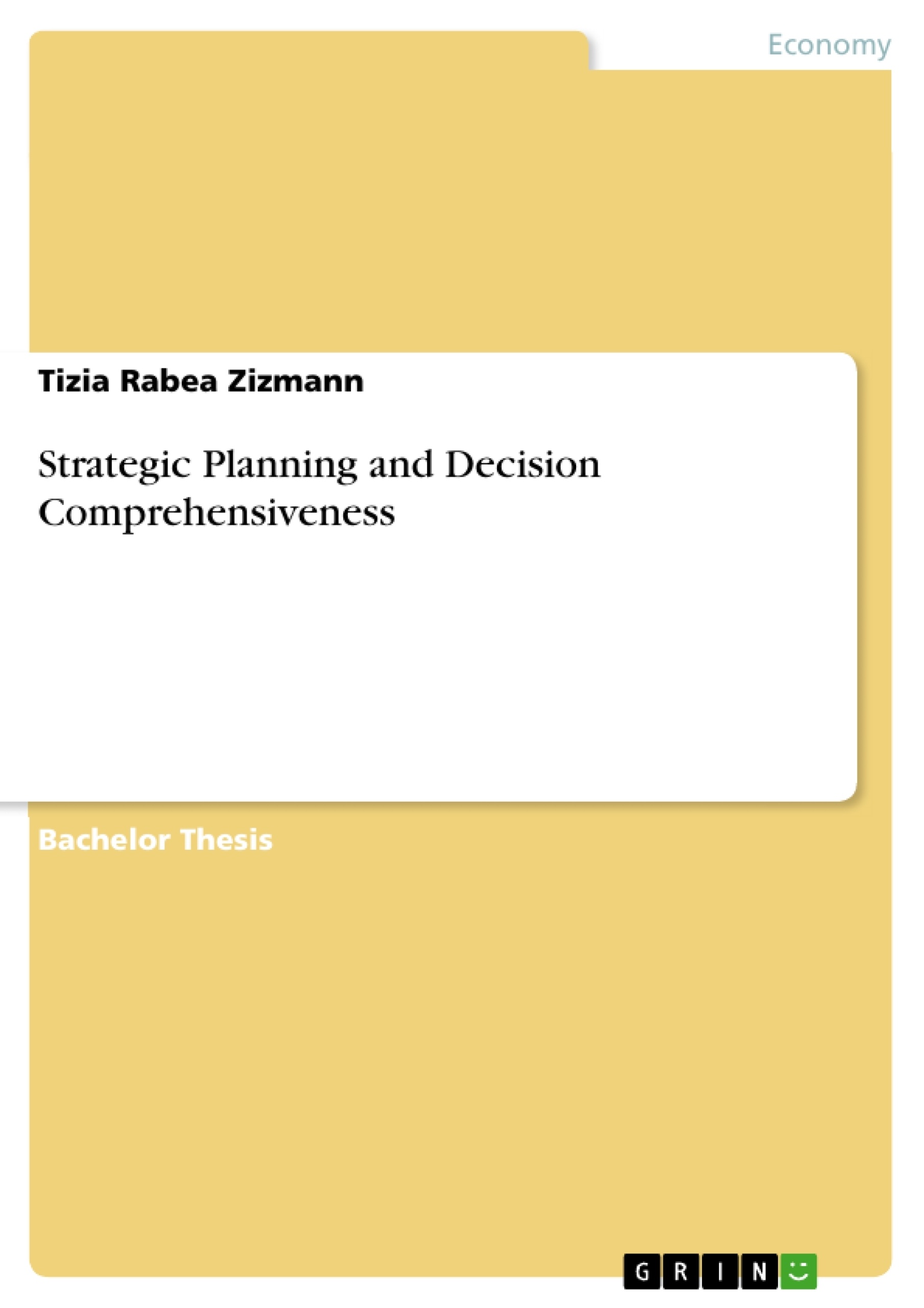The effects of strategic planning and decision comprehensiveness on decision quality have long interested strategic decision making researchers. However, there is large dispute on that topic among former researchers.
This thesis gives an overview of the existing literature of strategic planning and decision comprehensiveness, relevant to both practice and theory. Therefore, different databases have been scanned and high quality papers have been selected. Through the examination of the existing literature and the precise recombination of the different findings, this thesis provides a broad appraisal of the factors that have been identified as essential when deploying strategic planning and decision comprehensiveness. The thesis provides a wide arrange of recommendations for the implementation based on these results.
Inhaltsverzeichnis (Table of Contents)
- Introduction
- Aim of the Thesis
- Methodology
- Structure of the Thesis
- Basics
- Definition of Strategic Planning
- Definition of Decision Comprehensiveness
- Determining Factors
- Environmental Factors
- Environmental Uncertainty
- Environmental Change
- Environmental Complexity
- Technology Uncertainty
- Demand Uncertainty
- Munificence
- Competitor Activities
- Home Country
- Organizational Factors
- Top Management Team Characteristics
- Internal Power Structure
- Organization Age
- Firm Size
- Decision Specific Factors
- Decision Complexity
- Time Horizon
- Introduction of the Papers
- Analysis of the Factors
- Environmental Factors
- Environmental Uncertainty
- Environmental Change
- Environmental Complexity
- Technology Uncertainty
- Demand Uncertainty
- Munificence
- Competitor Activities
- Home country
- Organizational Factors
- Top Management Team Characteristics
- Internal Power Structure
- Organization Age
- Firm Size
- Decision Specific Factors
- Decision Complexity
- Time Horizon
- Discussion and Conclusions
- Limitations
- The relationship between strategic planning and decision comprehensiveness and decision quality.
- The impact of various environmental factors on the effectiveness of strategic planning and decision comprehensiveness.
- The role of organizational factors, such as top management team characteristics and internal power structure, in strategic decision-making.
- The influence of decision-specific factors, such as complexity and time horizon, on decision quality.
- Recommendations for implementing strategic planning and decision comprehensiveness based on the literature review.
Zielsetzung und Themenschwerpunkte (Objectives and Key Themes)
This thesis aims to review the existing literature on strategic planning and decision comprehensiveness, analyzing their impact on decision quality. The work explores both theoretical and practical perspectives, drawing upon high-quality research from various databases. The analysis focuses on identifying key factors that influence the effectiveness of strategic planning and decision comprehensiveness, providing recommendations for their implementation. Here are some of the key themes explored in the thesis:Zusammenfassung der Kapitel (Chapter Summaries)
The introduction establishes the thesis's objectives, methodology, and structure. It highlights the ongoing debate surrounding the relationship between strategic planning and decision comprehensiveness and decision quality. The basics chapter defines key concepts, including strategic planning and decision comprehensiveness, and outlines various determining factors, such as environmental, organizational, and decision-specific factors. It explores different aspects of each factor, including environmental uncertainty, organizational age, and decision complexity. The analysis of factors chapter examines the influence of various environmental factors on the effectiveness of strategic planning and decision comprehensiveness. This includes exploring the impact of environmental uncertainty, change, complexity, technology uncertainty, demand uncertainty, munificence, competitor activities, and home country. The chapter also analyzes the role of organizational factors, such as top management team characteristics, internal power structure, organization age, and firm size. Finally, it investigates the influence of decision-specific factors like decision complexity and time horizon.Schlüsselwörter (Keywords)
This thesis explores the concepts of strategic planning, decision comprehensiveness, and their influence on decision quality. Key areas of focus include environmental factors, organizational factors, decision-specific factors, and their impact on the effectiveness of strategic planning and decision comprehensiveness. The work also investigates the relationship between these factors and decision quality, providing practical recommendations for implementation based on the literature review.- Quote paper
- Tizia Rabea Zizmann (Author), 2013, Strategic Planning and Decision Comprehensiveness, Munich, GRIN Verlag, https://www.grin.com/document/264998



